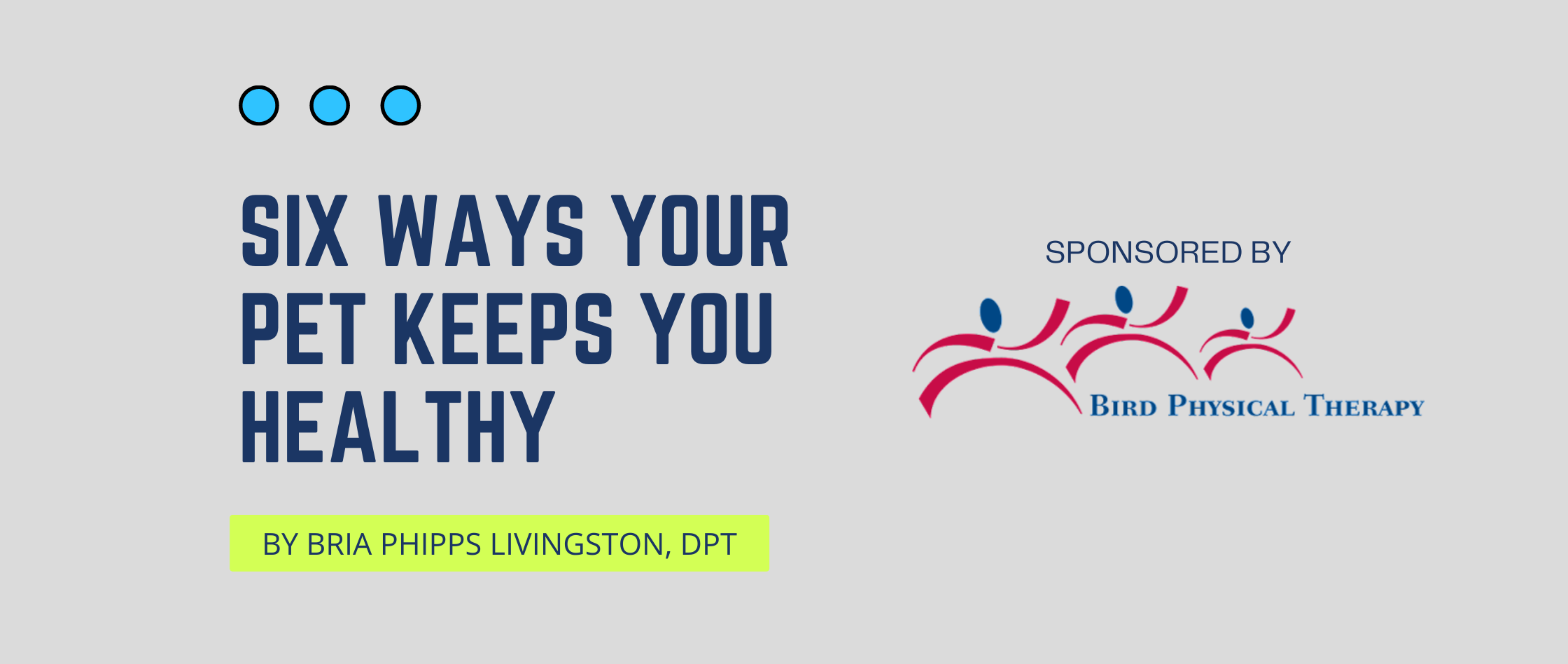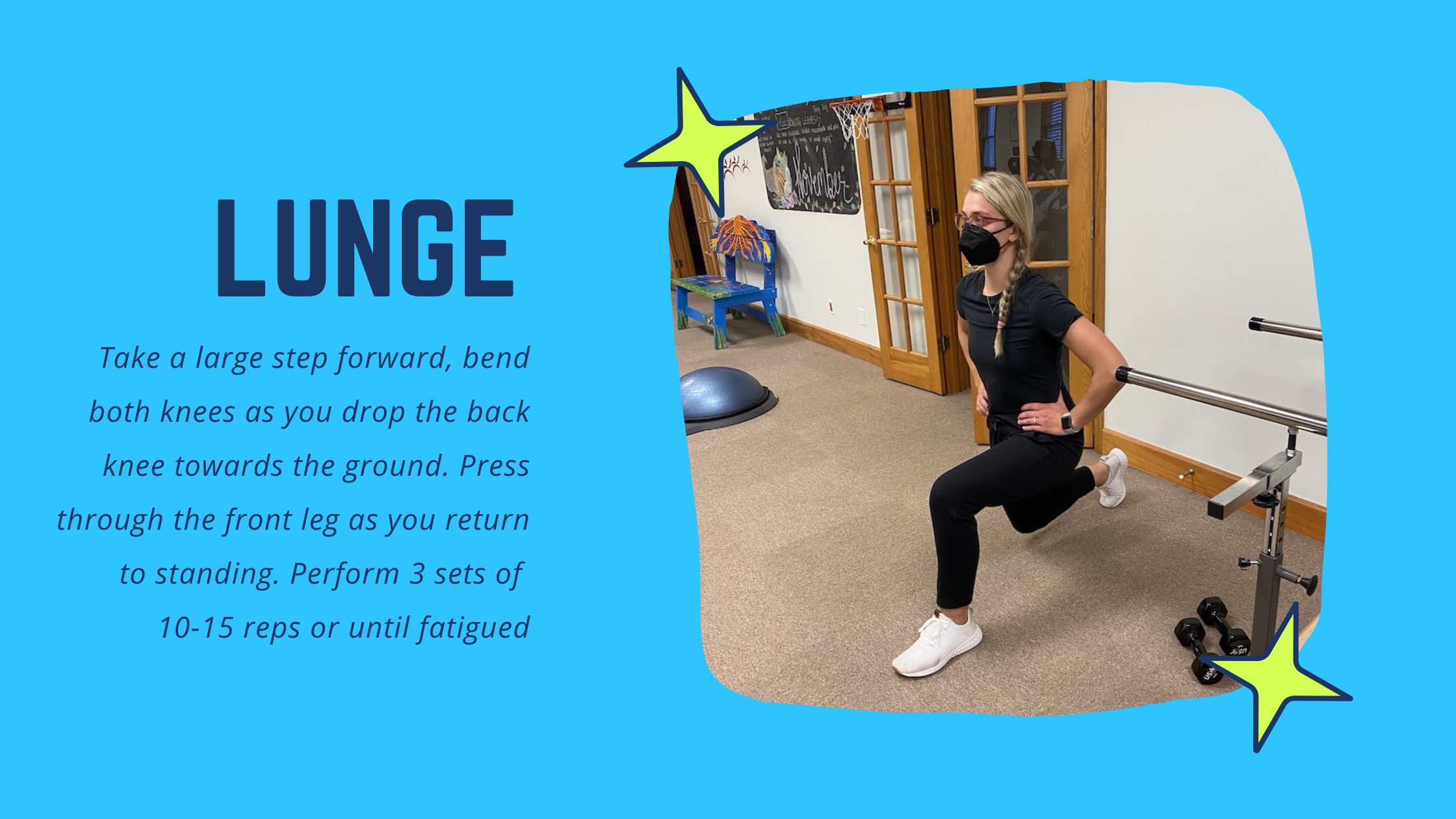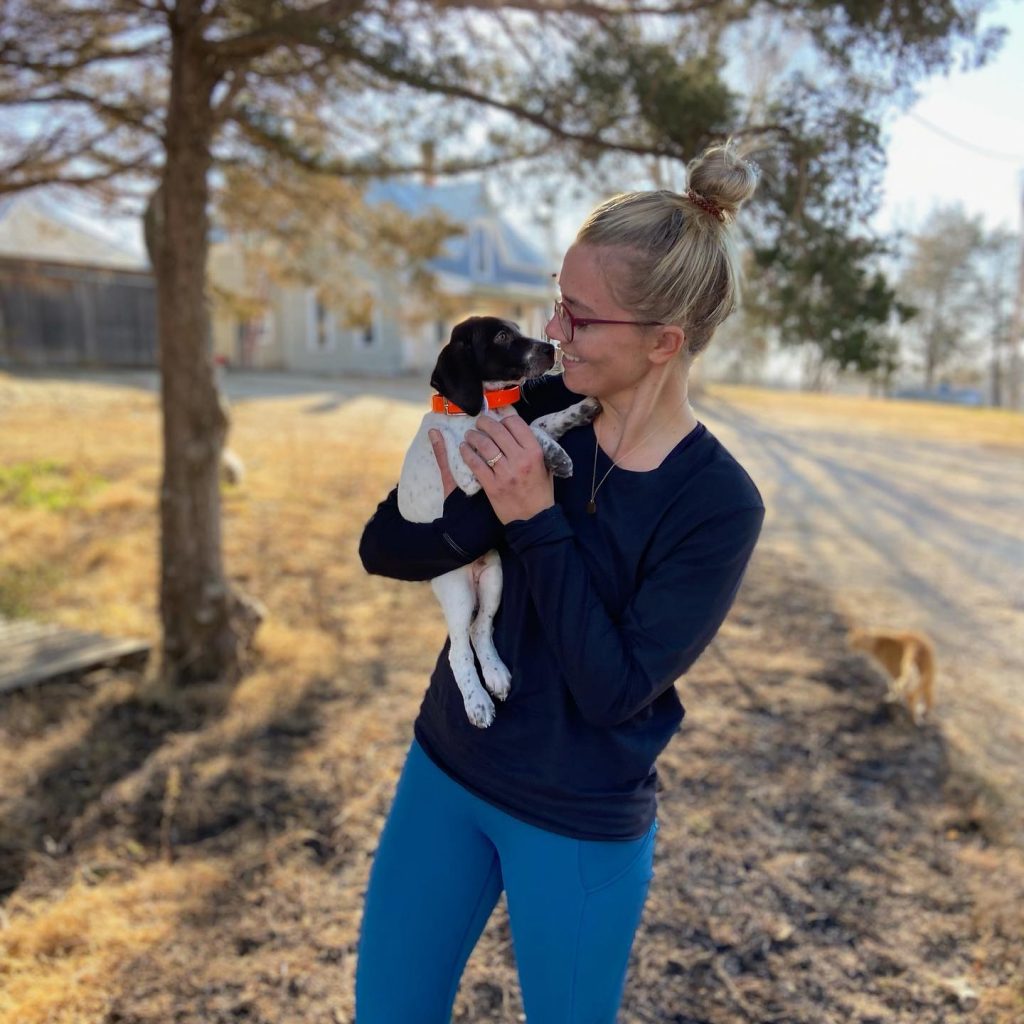
#1. Frequent walking
Those daily walks with your pup are beneficial for two main reasons: heart health and bone health! The American Heart Association recommends adults strive for at least 150 minutes of moderate intensity activity per week. What is moderate intensity activity? BRISK WALKING! Getting outside with your dog every day can keep your heart healthy. Studies have actually shown that pet ownership is associated with lower rates of high blood pressure. In addition, “pounding the pavement” is good for your bones. This weight bearing activity is important for keeping our bones strong and preventing the onset or impact of osteoporosis.
Wear comfortable shoes and monitor them for signs of excessive wear including tears, holes, or smoothing down of the soles.
#2. Strength training
Lunging and squatting and lifting, oh my! Whether it’s lifting an aging or tired pet up the stairs, carrying bags of food or cat litter, bending down to refill food and water, and holding back the leash when a squirrel runs by, pets demand a lot from us physically. The good news is all of these small tasks can be beneficial in building and maintaining all-over muscle strength. A phrase we use sometimes in physical therapy is “use it or lose it!” and pet owners definitely use it!
If you are currently experiencing joint or muscle pain with bending and lifting activities, consider using smaller/lighter loads. This may include buying smaller bags of food or taking more frequent rest breaks when performing pet related activities around the house. Consider contacting your healthcare provider or a physical therapist for additional help. In addition, try the few select strengthening exercises showcased below!
#3. Getting outdoors
Spending time outside has a variety of health benefits including: increased vitamin D, improved mood, increased concentration, improved sleep, better immunity, decreased pain levels, and increased energy! Many of these are due to the benefits of natural light. Although we’re currently in the middle of an unpredictable Kansas winter, it does everyone good to bundle up and head outside!
#4. Preventing falls
This is a tricky one, because for individuals with balance problems pets can actually become a hinderance by getting under foot. However, by being aware of the potential challenge ahead of time, pet owners can maintain strong balance and avoid potential safety hazards. Stepping over our pets puts us in a position of “single leg stance.” This is an incredibly important position to be able to maintain for good balance and safety when walking, navigating obstacles, and performing a variety of every day tasks. Secondly, dogs pulling on the leash creates something called “perturbation.” The ability to respond to these wobbling/jostling motions is important for navigating uneven surfaces or tolerating bumping into things without falling.
Keep mindful watch of where pets and chew toys are to avoid tripping. Take a look at the exercises below to practice your balance.
#5. Mental health
Pets are a source of physical contact, fulfilling the basic human need for touch. This can help to reduce stress, anxiety, depression, and loneliness. Pet ownership can also increase motivation for exercise and socialization. According to the Human animal bond research institute, 74% pet owners reported improved mental health from pet ownership.
#6. Service animals
There are a variety of service dogs to aid individuals with physical, mental health, or neurological needs in their daily lives. Dogs can be trained for assisting those with visual impairments, hearing impairments, and mobility limitations. They can also alert their owners to oncoming seizures or blood sugar events. Many dogs can assist with psychiatric or autism support and some can even detect food allergies! Our animals really do make our lives better in a variety of ways every day.
Do not pet, feed, or distract a service animal while they are working. This is typically designated by a harness or vest. Distracting this animal may prevent them from doing their job effectively. Always check with the owner of any animal (service or not!) before petting to be sure it is okay.

*Please do not attempt these if you have significant concerns about your health or safety. Instead, contact a physical therapist or other healthcare provider for a tailored plan to suit your needs.






BRIA PHIPPS LIVINGSTON
Bria Phipps Livingston is an Lawrence native and a graduate of Creighton University with a Doctorate in Physical Therapy. She is the Patient Care Manager at Bird Physical Therapy in Lawrence. She loves to stay active and spend time outdoors with her husband Jay and their German shorthair puppy, Otto.
Want to write an article for the Wet Nose News?
Email your ideas to marketing@lhs.bluesym7.work and let’s chat about publishing your story on our website!

